|
British Transport Films (BTF) was set up in 1949, following the nationalisation of public transport. As the in-house film production unit of the British Transport Commission, it ran until 1982, becoming one of the largest makers of training films, travelogues and industrial films (some of which achieved commercial distribution as supporting short films) in the country. BTF was run by Edgar Anstey from its inception until 1974 and by John W. Shepherd for the remainder of its existence. The unit made some seven hundred films, the majority of which are now held in the BFI National Archive. Many of them feature well-known names among their crews, often near the start of their careers. There clearly is a steady market for these films on disc, as the BFI have so far put out fourteen DVD releases of BTF films. That shows that with Blu-ray more than a decade old and 4K UHD having settled in to the market, there clearly is a large audience that will still buy these films on DVD. However, many of the films have been scanned and restored and exist in HD masters and so this is the second Best Of BTF collection that the BFI has put out on Blu-ray. There are twenty films on two discs, just over seven hours’ worth. The films are presented in chronological order.
| THE WEALTH OF THE WORLD: TRANSPORT |
|
Made in 1950, this takes us to the time of the 1948 Transport Act passed by Clement Attlee’s Labour government, and argues for the nationalisation of the railways – and not just of those but of roads and waterways too. We’re watching these now from the other side of the 1980s, when Margaret Thatcher’s Conservative government proceeded to privatise many of these again. In an industrial society, the film argues, commercial competition leads to wastefulness and nationalisation is the answer. This is an argument made by multiple voices on the soundtrack, including those of workers. Director Peter Bradford had previously worked with the major British documentary filmmaker Paul Rotha and shows his influence in the way the film is structured – and shot, in crisp black and white 35mm. It was produced by BTF but made by Pathé’s documentary unit.
From the same year, this was the first film made by BTF in-house. We drop in on the SS Bravo, which carries freight and passengers between Hull and Gothenberg. We witness the work needed to keep the service on time and schedule, particularly from the viewpoint of a dock foreman in Hull and a Swedish passenger. At forty-two minutes, which makes it either a long short or a very short feature depending on your definition, it’s the longest film in the set, a little too long in fact.
Directed by J.B. (Jack or more formally John Bruce) Holmes, Berth 42 was edited by Stewart McAllister, who was a major figure in British documentary in the 1940s and 1950s. He worked with Humphrey Jennings and Harry Watt on such films as Target for Tonight, Fires Were Started and Listen to Britain, being the co-director of the last with Jennings. McAllister will feature again in this set. He died in 1962 of cancer, aged just forty-seven.
Another from Mr Holmes, made two years later, this bears a curious credit, saying it was “inspired in large part by ‘Le Voyage’ by Charles Baudelaire, 1857”. Nineteenth-century French poetry doesn’t feature much in this half-hour portrait of the Southampton port terminal and the people who work or pass through there, portrayed by a mix of real port workers and ship crew and some professional actors, Barbara Lott among them. You can briefly glimpse Gracie Fields as well, two decades after she was one of of the biggest film stars in Britain. N.B. The booklet with this set (or at least the PDF copy I was supplied with to review) says that this film is in colour and black and white, but that appears to be a mix-up with Contact With the Heart of England (see below) and is in fact in black and white throughout.
From 1955, and over the border to Margam Steelworks in Wales, also known as the Land of Song. If you didn’t already know that, you can hardly escape it as much of the images in this film are accompanied by a male-voice choir and there well be too much of it for many tastes. The film itself is a showcase for British construction, such as the manufacture of London buses, canal locks and railway sidings.
This film was made in 1956 and more than most seems to belong to a different age. Accompanied by a commentary written by Paul le Saux and the film’s director Kenneth Fairbairn and read by Marianne Stone and McDonald Hobley, several housewives from around the country take a break from their daily chores and take the trains for a day in the countryside, leaving children with friends where appropriate. While well made, and crisply shot in black and white by another future feature cameraman (Robert Paynter), six and a half decades on it seems more than a little patronising.
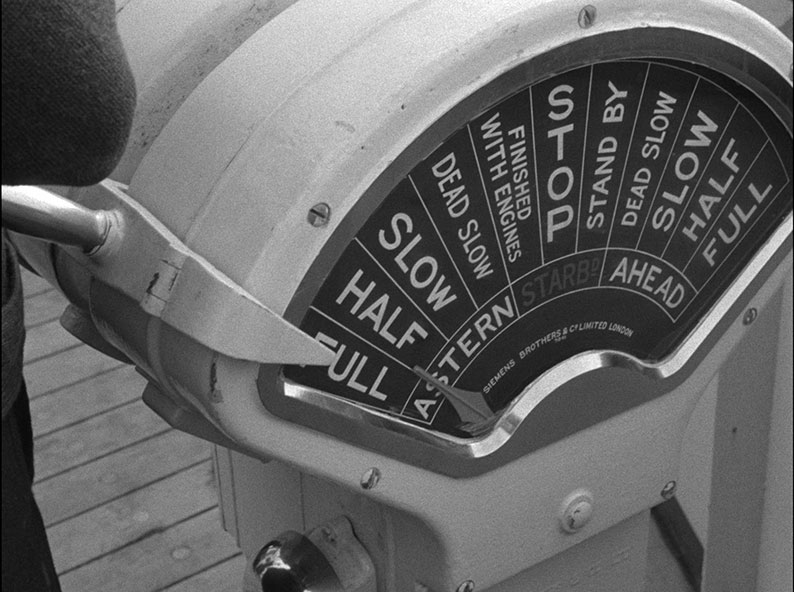
Before the Channel Tunnel and the advent of cheap air transport, the only way to reach the continent of Europe from Britain, or vice versa, was by ferry. Link Span (sometimes rendered as Linkspan, though it’s two words on screen) shows us a day in the life of three of these “link spans”. Each carries a different type of cargo: cars out of dover, the overnight freight-train ferry bringing you fresh vegetables from Zeebrugge to Harwich and from there to British shops, and the passenger ferry from Dover to Dunkirk, joining train services to each country’s capital.
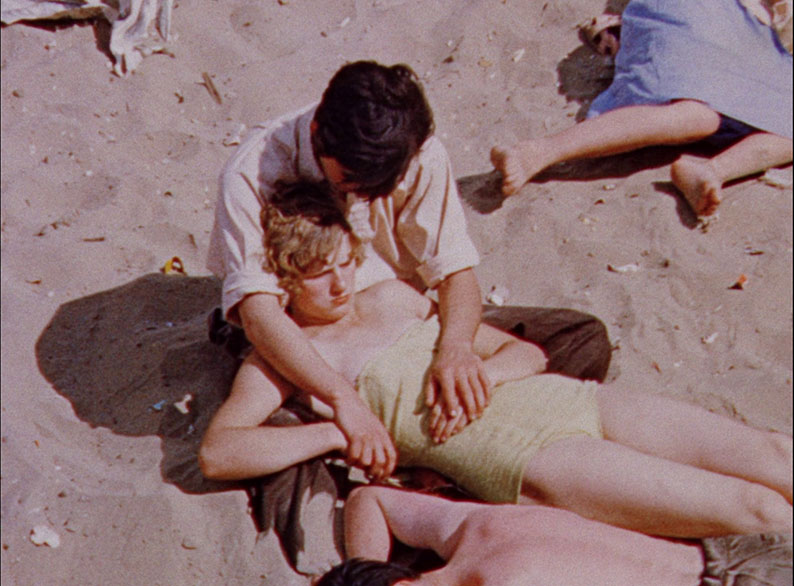
Directed by John Taylor in 1957, Holiday takes us round the sights of a Blackpool seaside holiday, on the beach by day and fireworks at night, with minimal narration and a soundtrack largely taken up by jazz standards played by Chris Barber and his band. Ralph Sheldon’s editing takes its cue from the music, with divers entering water and cymbals being struck in unison. Unlike the previous films in this set, it was shot in colour, but in 16mm rather than 35mm. The cinematography was by David Watkin who, instead of taking the traditional path of beginning as a tea boy and working his way up through the camera crew before becoming a director of photography, earned his chops in documentary before becoming one of Britain’s leading DPs in the next decade.
Also directed by Taylor in 1957, also shot by Watkin, along with James Ritchie, in colour (35mm this time), this film looks back from early in the second Elizabethan era to the England of the first one. The commentary, spoken by Alec Clunes, takes us round traces of that era that survive, in houses, books, paintings, all produced in the time of Elizabeth I and her famous subjects such as Sir Francis, Sir Walter Raleigh and William Shakespeare. It looks sumptuous, and if that wasn’t enough the score is by Ralph Vaughan Williams.
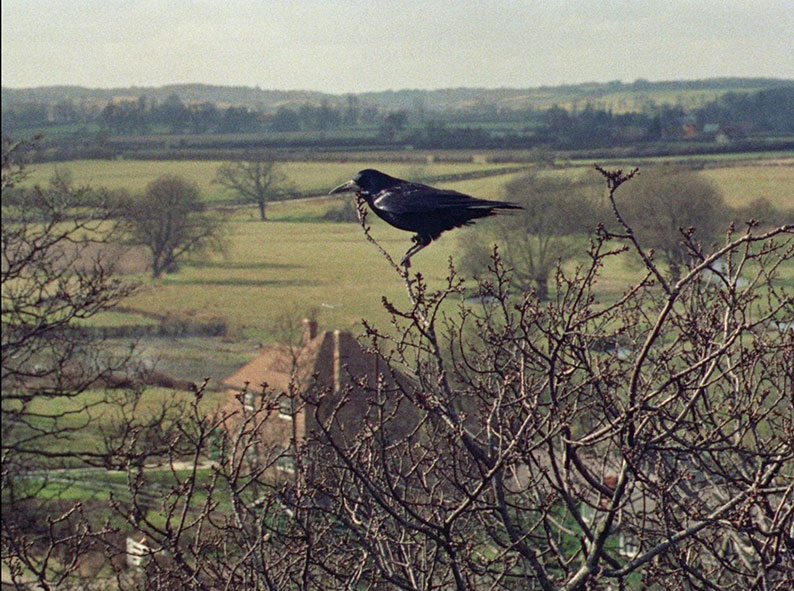
1957 was clearly a good year for BTF, though transport as such doesn’t play much of part in this film. Shot in Technicolor, Journey into Spring takes us to Selborne in Hampshire, home in the eighteenth century of the Reverend Gilbert White, who combined his duties as a parson with being an amateur naturalist. With a commentary written by Laurie Lee, read by Stephen Murray, Journey into Spring takes us up close to the local wildlife in much the same way as White would have observed its counterparts two centuries earlier. Journey into Spring was nominated for two Oscars, for Best Live-Action Short and Best Documentary Short, and won the BAFTA for Best Documentary.
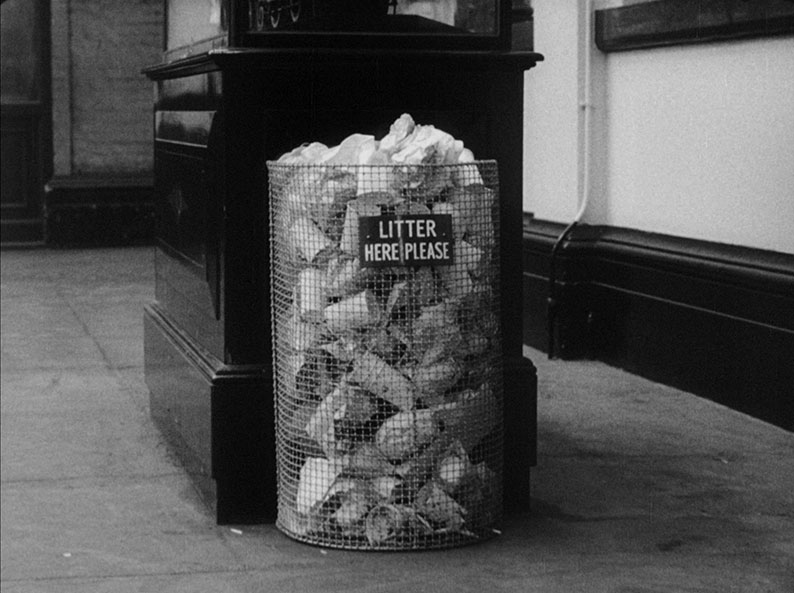
Pedantic filmographic note: the disc menu and booklet review copies received call this film I’m a Litter Basket, but the slightly more formal version is what appears on screen. Over six minutes, a litter basket asks to be fed and for litter not to be scattered for other people to pick up. Stewart McAllister has a lot to do with this entertaining six-minuter, but not as an editor this time – Hugh Raggett does those particular honours this time. Instead, McAllister was the producer and he also reads Paul le Saux’s narration, which explains how a Scottish litter bin is sitting in a mainline London train station.

Disc Two begins with this 1959 account of the construction of the Severn Tunnel, which took thirteen years, 1873 to 1886. This enabled, before the famous Bridge was built, traffic to cross the Severn Estuary from Gloucestershire to Monmouthshire without the lengthy detour previously required. It was the brainchild of Great Western Railways’s chief engineer Sir John Hawkshaw. The film takes us through the project from start to finish, including the near-disaster of 1879 when the workers intercepted an underground spring and flooded the works. The tunnel was rerouted and finally completed, and the first passenger train went through the tunnel on 1 December 1886. For over a hundred years, it was the longest mainline rail tunnel (four and a third miles, of which two and a quarter are under the river) in the UK and the longest underwater tunnel in the world until it was surpassed in 1987. Six Cornish beam engines kept the tunnel free of water for some seventy years before being upgraded.
Geoffrey Jones’s film, shot in 35mm colour by Wolf (Wolfgang) Suschitzky, began as an idea to contrast the train crew and their passengers’ experience of winter and heavy snowfalls: the former working in freezing conditions to keep the lines clear and to ensure the warmth and comfort of the latter. By the time Jones got the go-ahead, there was snow on the ground in the West Country in the middle of the hardest winter in living memory (1962/3). Jones and his crew worked fast, completing the shooting in nine days, by which time the snow had begun to thaw. The film, with no narration, is a virtuoso exercise in the interplay between sound, picture and editing. The music is based on an arrangement by Johnny Hawksworth of a jazz piece by Sandy Nelson, “Teen Beat”, frequently speeded up and slowed down, with electronic effects provided by Daphne Oram, who was the co-founder of the BBC Radiophonic Workshop. Three years after it was made, Snow was nominated for an Oscar for Best Live-Action Short.
| RESHAPING BRITISH RAILWAYS |
|
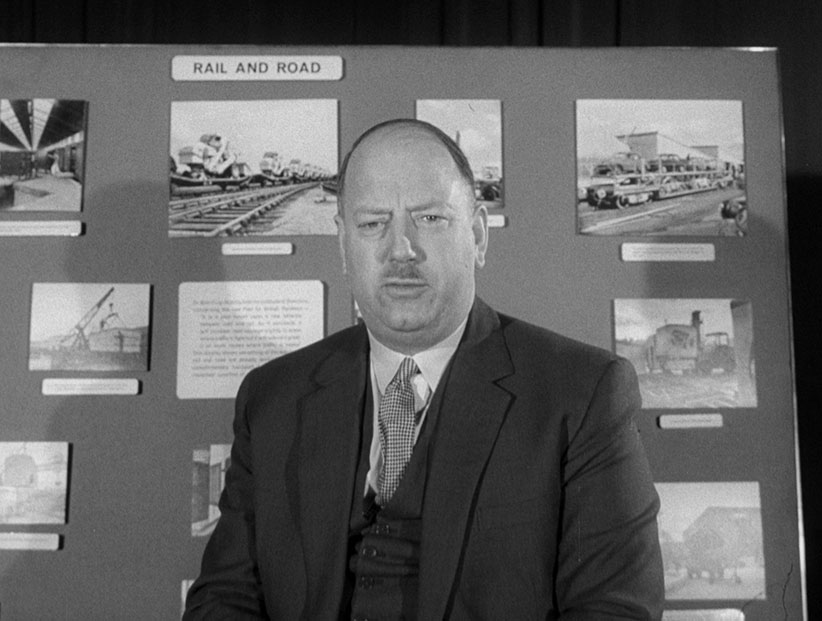
Dr Richard Beeching, later Lord Beeching, is the bête noire of many a railway enthusiast, for his role in closing many rail lines and some 2000 stations. This followed a committee recommendation that Britain’s railways could and should be run at a profit, and Beeching was the man appointed to find ways to do it. He identified that a small number of routes covered the bulk of freight or passengers or both, and routes in more rural areas were sparsely used and should be closed. And in fact they were. This film from 1963 aims to put the case for Beeching’s proposals, with the man himself appearing on camera to that end.
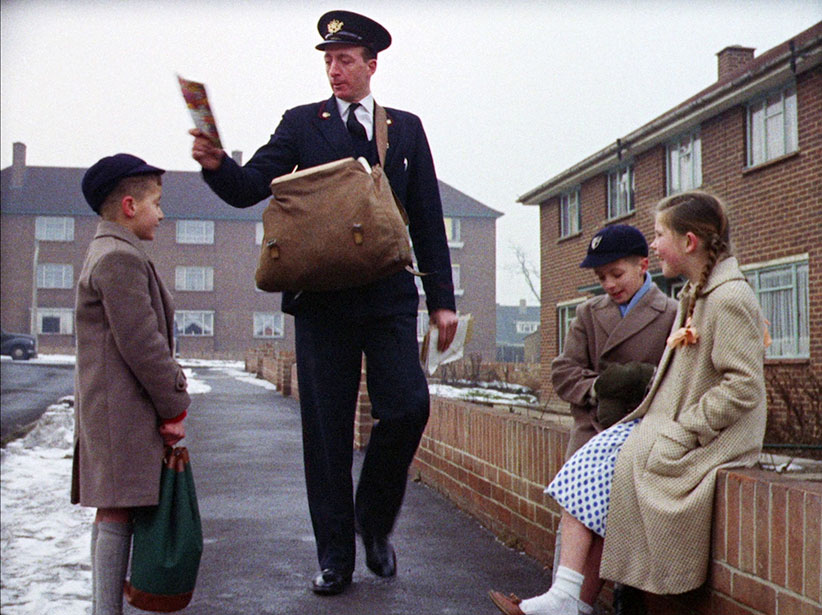
In 1963, when this film was made, some thirty million letters were posted and delivered across the UK, hence the title. Nowadays, it’s a different world, but James Ritchie’s film, made in colour and with a music score by Derek Bourgeois, shows the Post Office in action, from a sorter on the mail train leaving Euston Station, a new-fangled letter-sorting machine, all the way to the postman delivering the letter, even as far away as the Outer Hebrides. Edgar Anstey, BTF Head and this film’s producer, had worked on Night Mail (1936) and was proud of what was effectively a follow-up. Thirty Million Letters was Oscar-nominated as Best Documentary Short.
Directed by Edward McConnell with a commentary read by Bryden Murdoch, Glasgow Belongs to Me is a look at the great Scottish city and its development from small communities on the banks of the Clyde to the large industrial centre it had become by 1966. The film also looks at the historical tensions that shaped that change.
| CONTACT WITH THE HEART OF ENGLAND |
|
This is a film of two parts. In April 1966, the Inter-City service was launched, using high-speed (125 miles per hour) electric trains to link London to midlands and north-western cities such as Birmingham, Wolverhampton and Stoke on Trent. Journey times were cut and passengers could relax or do work in comfort. Mr HC Johnson, the Chairman and General Manager of London Midland Region, introduces the film to camera and we then see an account of rail travel at the time. This is in black and white, but towards the end the film bursts into colour for a montage sequence that is very reminiscent of Snow, earlier on the same disc.
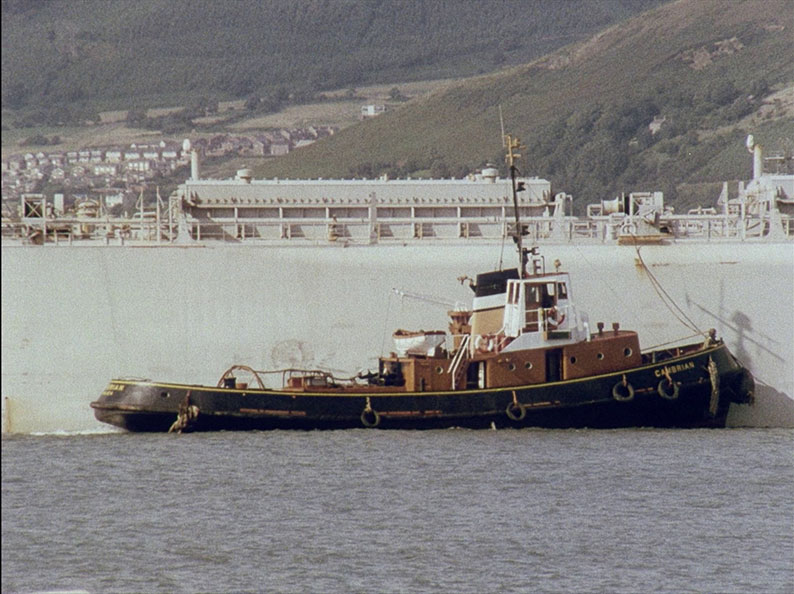
In 1970, the British Transport Docks Board built a new harbour at Port Talbot, in order to cater for large container ships, up to 100,000 tons, carrying iron ore, which had not been feasible beforehand. This cost £20 million. Very much a showcase for British maritime industry, the project made Port Talbot Harbour a place with facilities equal to anywhere in the world. On hand to capture this for prosperity was documentary director Gloria Sachs, and the film covers the process from quarrying the stone to dumping it in the sea to make the breakwater.
APT-E for Advanced Passenger Train-Experimental, designed to travel up to 155mph, and also to take curves faster than normal trains. And if you ever wanted to know how a train could tilt and brake at such speeds, now you can.
Of course, with all this advanced technology, things can and do go wrong. A train starts late due to the delay of a connecting train. Freight trains block lines. A door isn’t properly shut. All this results in a young man in Leicester arriving late for a job interview. The aim of this film is simply for workers of the then (1982) British Rail to get it right first time.
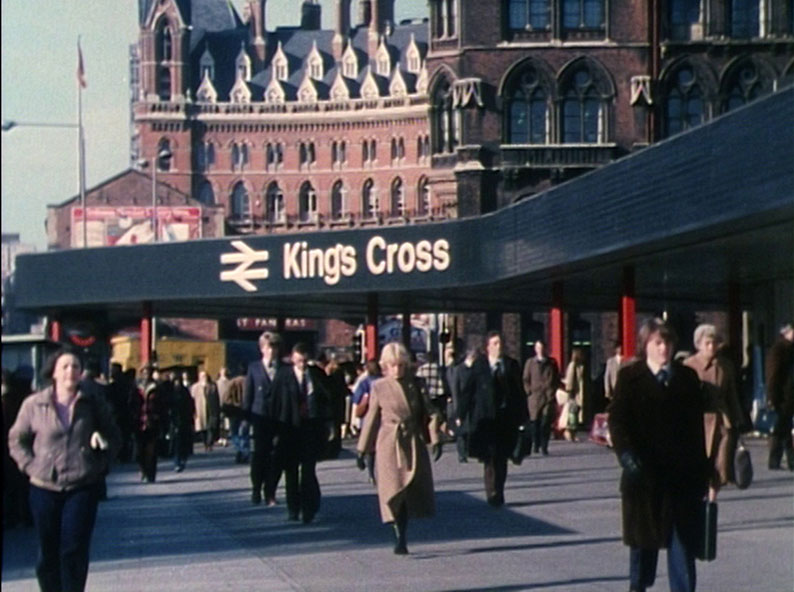
We’re at King’s Cross Station. All aboard the Inter-City 125 to Leeds via Peterborough, Doncaster and Wakefield. The journey time to Peterborough will be approximately three minutes and ten seconds. And so it is, with the journey captured from the driver’s viewpoint by a camera running at the speed of two frames a second. Shots of passengers and crew inside the train and some static shots of the train passing by from a tunnel are at normal speed, to avoid the audience getting too travel-sick. But if a train could ever travel at 1250mph, this is what it might be like.
The Best of British Transport Films Volume 2 is a two-disc Blu-ray set encoded for all regions, with ten films per disc. As the films are all documentaries which would not get anything higher than a PG certificate if they were ever submitted to the BBFC, this release has been exempted from certification. That said, some of the films were shown in cinemas, or maybe intended to be so, as supporting shorts and were passed by the Board at the time. For the record, these films – The Wealth of the World: Transport, Berth 24, Ocean Terminal, Bridge of Song, Holiday, The England of Elizabeth, Journey into Spring, Snow, Thirty Million Letters, Glasgow Belongs to Me and The Site in the Sea – were all given U certificates in their day.
The films were shot mostly in 35mm in black and white or colour (16mm colour in the case of Holiday and Inter-City 1250) and have all been transferred to disc at 2K resolution from film elements in the ratio of 1.33:1. Any shown in 35mm cinemas before the mid 1950s would have been shown at 1.37:1 but I’m not convinced that later ones are all intended for that ratio and have not been made with wider ratios in mind, most likely 1.75:1 in a British commercial cinema. That said, the 16mm-shot Holiday certainly looks like it was intended for 4:3 and possibly a life in non-theatrical distribution. It did have a BBFC certificate so may have had some commercial life blown up to 35mm and would likely have been shown cropped. But certainly most of the later films display a fair amount of headroom in shots which indicates that the makers were allowing for much or all of that extra space to be cropped.
The soundtracks are the original mono in all cases, rendered as LPCM 1.0. There’s nothing untoward about these: there’s little or no on-screen dialogue, but most of the films have a voiceover narration and a music score and some diegetic sound, and it’s all well balanced. There are no subtitles for the hard of hearing available, unfortunately.
Booklet
The BFI’s booklet, available with the first pressing only, runs to twenty-four pages. It starts with an introduction by Steven Foxon, curator of non-fiction at the BFI National Archive, and the man responsible for the preservation of the BTF collection. He begins with L.P. Hartley’s famous quote from The Go-Between, about the past being a foreign country, but counteracts that with the observation that the BTF films were made to document the present at the time they were made, and to look towards the future in its industry. Now, of course, they have become repositories of the ambitions and culture of times past. In particular, we see the rail industry, held back due to wartime austerity, looking to rebuild itself in the 1950s. In the next decade, colour became more affordable and more experimental filmmaking styles took hold. In the 1970s, budgets were cut and non-theatrical distribution became the goal, so no longer as cinema shorts but as films to be shown in clubs, film societies and schools.
The rest of the booklet is made up of credits for and notes on each film in the set, mostly by Foxon, but with contributions by Tim Boon on The Wealth of the World: Transport and Katy McGahan on Contact with the Heart of England.
This second compilation brings together twenty of the best British Transport Films productions and makes them available in high definition. There clearly is room for further sets like this.
|